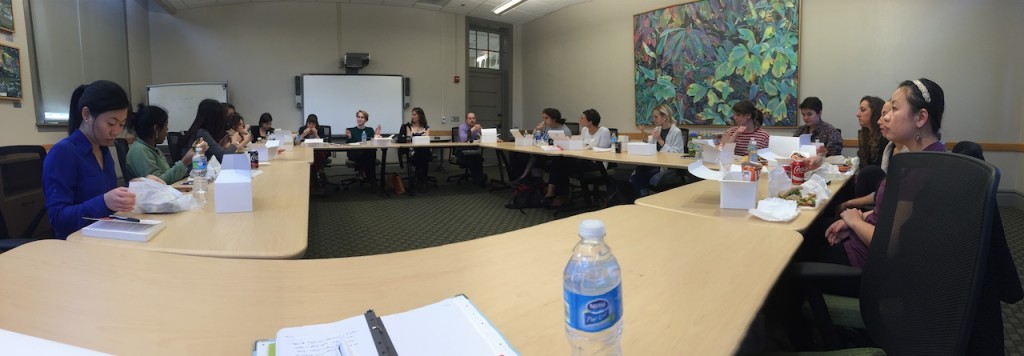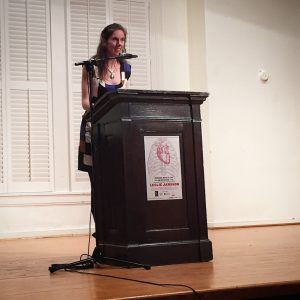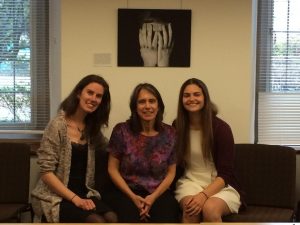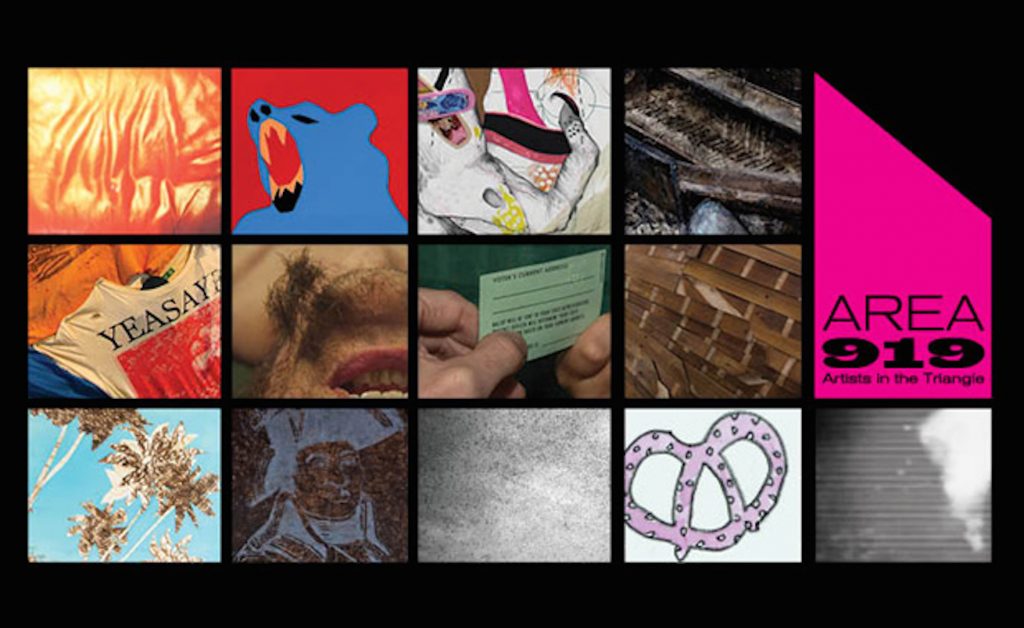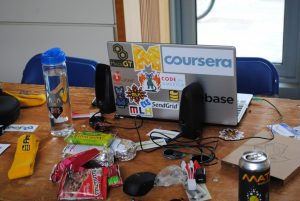Around this time of year, if you happen to stop by West Duke—it’s very quiet, sometimes eerily so, with the students gone—you’ll see on one of Kenan’s two video screens, usually used to announce events during the school year, a quite lovely watercolor map of the world. On it there are a smattering of red pins. Several, you’ll notice, are clustered loosely around where North Carolina begins and ends, and where its western borders meet those of Virginia and Tenneesee, whose own borders meet those of Kentucky and West Virginia, and then to the South, the lowest-most points of Appalachia in Georgia. And then there are the pins a bit closer in, toward where I imagine West Duke would register on a satellite map. Zoom out and you’ll see pins dropped in California, Ireland, Kenya, and Jordan.
It’s always exciting to see where Kenan students fling themselves and land during the summers, and what types of projects they undertake in said places (on said pins). It’s especially exciting to me this year to see projects equally balanced between home and abroad—and to see places close to Duke and Durham signify home for a number of undergraduates. The Bull City Dignity Project, spearheaded by Summer Fellows alum Lara Haft and Project Change alum Kari Barclay, as well as documentarian Mariana Calvo, will engage Durham high-schoolers and Durham community members in a documentary theater project. At the heart of the project—which you can read more about here—are questions surrounding the idea of “dignity”: “What worth do we place on ourselves and on those around us? Is dignity something we’re born with or something granted to us by others? How do our identities shape how people perceive us and how we perceive ourselves?”
There are four Kenan Summer Fellows this summer, and their first updates are just now rolling in: from San Francisco, CA (and eventually Nairobi, Kenya); Clarkston, GA; the Appalachian Mountains of West Virginia; and, well, cyberspace. On the latter: Alex Zrenner, a Project Change alum and Team Kenan member, will investigate the ethics of online society and economy by focusing on a cyber harassment victim advocacy organization. I’ll be interested to see how Alex develops a sense of place and centrality through her research, which draws from instances of harassment that could be catalogued to no end online.
I’m winding down my tenure here—next week will mark my last blog post for Kenan before our new Bear Fellow, Cece Mercer, comes onboard to introduce herself with her first. Very soon I’ll publish what I’ve put together from my two weeks in Ireland last summer, which I spent partly in conjunction with the DukeEngage Dublin students (a new set is about to embark on their time in Ireland; watch the Kenan site for more), and partly in the throes of an investigation into the abrupt closure of a creative community center downtown. Central to the piece is a type of a mapping, a pin-dropping, which both reinforces the idea of claiming space and invites readers to embody the landscape themselves. Another way to do that is, of course, to imbibe the place-based stories of others—and luckily, you can, by following the stories of where Kenan students have immersed themselves this summer.
—MD

